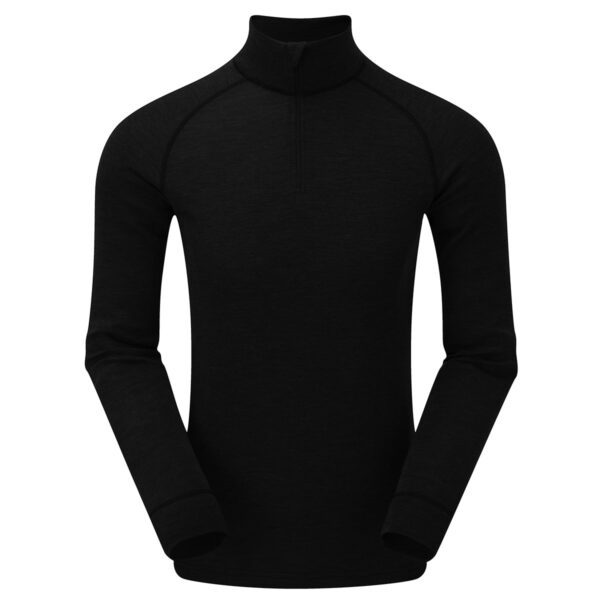Great Merino Wool Base Layer Info
Wiki Article
Why Is Yak Merino Wool Base Layers Beneficial For Winter Sports Clothing In Terms Of Natural Fiber Benefits?
Natural fibers are an excellent option for base layers of winter sports clothes, not only for their performance but also their environmental sustainability.
Both merino and yak are natural fibers that come from animals. These renewable resources can be harvested without causing harm to animals. The fibers are biodegradable, which means they do not harm the environment.
Low Environmental Impact
Natural fibers tend to have a smaller environmental impact than synthetic fibers. The process of harvesting and cultivating wool is less involving chemicals and less non-renewable materials compared with synthetic fibers.
Energy Efficiency
The manufacturing of synthetic fibres such polyester or nylon takes more energy. Natural wool's manufacturing process uses less energy, which lowers carbon emissions.
Microplastic pollution is reduced
In contrast to synthetic fibers, which shed microplastics during washing natural wool fibers don't contribute to microplastic pollution in water bodies.
Durability, Recyclability, and Longevity
Yak merino clothes can last an extended time and are extremely durable. The wool fibers are also able to be recycled and reused. This reduces waste as well as the environmental impact.
Sustainable Practices
Producers and manufacturers of wool adhere to sustainable and ethical methods. They ensure animal welfare as well as responsible land management, as well as decent working conditions for all workers throughout the manufacturing chain.
Environmental Certification-
Certifications like the Responsible Wool Standard (RWS) or the Global Organic Textile Standard (GOTS) ensure ethical and environmentally conscious practices in wool production, providing consumers with assurance about sustainability.
The yak merino base layers are sustainable for the environment because they are made from natural and renewable sources, and are able to incorporate sustainable and ethical practices into the supply chain. The use of natural fibers in winter sports clothing like yak or Merino is an opportunity to support environmentally friendly consumption. View the best funny post about merino wool base layers for site recommendations including skiing base layers, merino wool base layers, smartwool 250, smartwool merino 250, merino wool long underwear, ski base layer womens, best merino base layer, wool base layer, wool thermals womens, base layer moisture wicking and more.

What Are The Benefits Of Bamboo Clothing?
Thermal RegulationBamboo clothing comes with many advantages, including protection from UV rays, biodegradability, as well as environmental impacts.
Bamboo fabric insulation offers warmth in cold weather, while still being air-conditioned. It regulates your body's temperature, keeping heat in cooler weather and allowing air to circulate in order to avoid overheating.
UV Protection
UV Resistance- Bamboo fabrics provide natural protection against harmful ultraviolet Rays. Bamboo fabric blocks up to a third the UV rays.
Biodegradability-
Eco-friendly- Bamboo clothing is biodegradable. This means that it degrades without harmful residues and does not cause pollution to the environment. This reduces the amount of garbage and reduces the environmental impact of discarding clothes.
Environmental Impact-
Sustainability- As a natural material bamboo is extremely eco-friendly. It is fast-growing and abundant with no need for chemical fertilizers, pesticides or other chemicals. The impact on the environment is decreased. The speed of growth of this plant makes it an energy source.
Low Water Use- Bamboo requires relatively less water than other crops such as cotton, which makes it more water-efficient. This contributes to water conservation and reduces the pressure on resources.
Soil Conservation
Soil Health: The cultivation of bamboo does not typically deplete soil nutrition or require extensive irrigation. Bamboo cultivation contributes to healthier soil conditions and reduces need for harmful agricultural methods.
Carbon Sequestration
Carbon Absorption - Bamboo plants are able to absorb more CO2 than other plants and release more oxygen in the air. This property supports efforts to mitigate carbon emissions and combat climate change.
Bamboo clothing is a great option for those looking to wear clothing that is practical and sustainable. These qualities align with environmental conscious practices and bring benefits for the environment and the wearer. View the recommended bamboo clothing examples for site tips including bamboo yoga clothing, bamboo fiber t shirt, bamboo shorts womens, bamboo twirl dress, short sleeve bamboo pajamas, bamboo athletic wear, bamboo twirl dress, bamboo cay shirts, bamboo trousers women, cozy earth clothes and more.

What Are The Differences Between Bamboo And Merino Clothing?
Merino wool layers, bamboo clothes, and regular wool possess distinct features that distinguish them from other wools. Merino Wool
Softness- Merino is known for its fine, soft fibers that are comfortable to wear. It's less likely to trigger irritation or itching when compared with traditional wool.
Merino Wool is a Moisture Wicking. Merino wool wicks moisture away from the skin, allowing it evaporate, and to keep the wearer comfortable and dry.
Merino Wool is a great insulation and provides warmth even when wet. It regulates body's temperature, and acts as an insulation during cold weather.
Odor Resistance - It naturally prevents the growth of bacteria that cause odor and keeps clothes fresh when worn for a long time.
Bamboo Clothing
Bamboo clothing is said to have a silky and soft texture, which can be compared to cashmere, or even silk. It's luxurious and soft to wear.
Bamboo fabric wicks away moisture and draws moisture from the skin, keeping the wearer dry.
Temperature Regulation- Bamboo clothing has natural temperature-regulating abilities, offering warmth in winter and breathability to prevent overheating.
Sustainable Bamboo is a extremely renewable resource that grows rapidly without the need for fertilizers or pesticides. It's biodegradable and has a very low environmental impact.
Regular Wool-
Texture. Traditional wool comes in a variety of textures. Some are more coarse and may cause irritation or itching.
Warmth - Wool can provide excellent insulation and warmth but it may also be bulky.
Absorption of Moisture - Wool is able to absorb water, which makes it less effective at wicking moisture than merino and bamboo fabrics. It's still warm when it is damp.
The advantages of merino include its softness, moisture-wicking capability and resistance to odor and insulation. Bamboo clothing has a soft texture, excellent moisture-wicking properties as well as temperature regulation and sustainability. Regular wool is different in texture, may not offer as much softness or moisture wicking capability as merino clothing or bamboo clothes, however they will offer warmth and insulation. Each one is distinctive and can be tailored to different fashions of winter clothing. See the top rated bamboo winter clothings for blog examples including ski thermals mens, wool layers, wool underlayer, wool long underwear, paradox merino blend, best thermals for skiing, hh lifa merino, hh lifa merino, wool base layer womens, cheap merino wool base layer and more.
